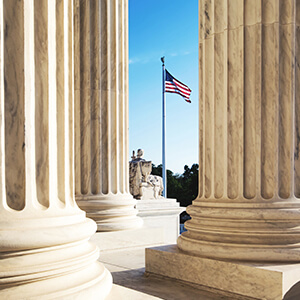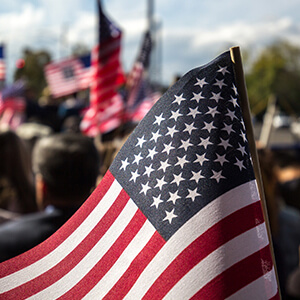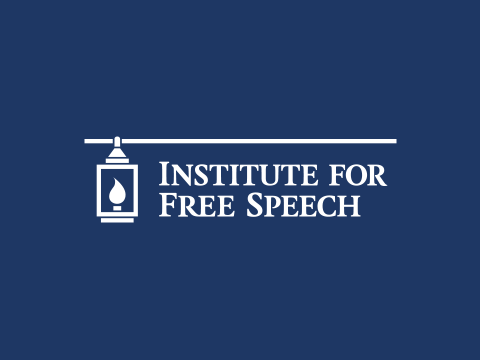It isn’t easy defending politicized tax enforcement, but our liberal friends are up to the job. The real IRS scandal, they say, is the use by conservatives of 501(c) tax status as a shield for political advocacy.This chorus is echoing across the liberal establishment, and Democrats used last week’s Senate IRS hearing to complain that “a Mack truck is being driven through the 501(c)(4) loophole,” as Montana’s Max Baucus put it. We appreciate that liberals have so burdened the tax code with rules and exceptions that even they can’t understand them. So allow us to offer a primer on 501(c) tax law.Congress wrote the 501(c) code to provide tax-exempt status to a broad range of groups. While so-called social-welfare organizations are the current object of Democratic ire, the code covers 28 categories of organizations. So 501(c)(3) groups include charities and educational institutions. The 501(c)(4) category covers social-welfare groups. The 501(c)(6) label includes trade associations and chambers of commerce. And there is the Democratic favorite: 501(c)(5)s, or labor unions.
By KARL ROVEMr. Wallace asked Mr. Durbin why he singled out Crossroads GPS for an IRS investigation and pointed out that his letter “did not mention one single liberal group.” Mr. Durbin offered this ludicrous defense: If the IRS investigated GPS, “every other group would be put on notice.” Correction: An IRS investigation of a conservative 501(c)(4) would leave liberal 501(c)(4) groups gleeful—especially since liberal groups have operated for decades in the same way GPS does without Democrats complaining.Democrats were content to have 501(c)(4) groups active as long as they were operating on behalf of liberals and their causes. For example, no Democratic leader demanded the IRS investigate the 501(c)(4) arms of the League of Conservation Voters, National Abortion Rights Act League, VoteVets, NAACP, Defenders of Wildlife, Sierra Club and other liberal organizations that have spent millions excoriating Republicans, pushing liberal issues and registering voters.When Americans United for Change ran ads in 2007 slamming Republican senators up for re-election for supporting the surge of additional U.S. troops in Iraq, no Democratic lawmaker complained. Nor did Mr. Durbin gripe in 2011 when Bill Burton, his former staffer and an Obama White House official, organized Priorities USA, a 501(c)(4) to help the president’s cause.
By Alana GoodmanOne pro-Israel targets was HaYovel, which was featured prominently in the New York Times article. Six months after the article was published, the IRS audited the Nashville-based charity, which sends volunteers to work in vineyards across the Green Line.“We bookend that [New York Times] story. We were the first [group mentioned]. They really kind of focused on us,” said HaYovel’s founder Tommy Waller. “Then six months later we had an audit.”
By Meredith Shiner and Niels Lesniewski“The First Amendment is a fundamental value in this country, and the Supreme Court said as a constitutional matter, you can’t suppress free speech. And we knew all along that McCain-Feingold carved out for organized labor and other groups, so it was really a lopsided deal in the first place,” he said when asked if recent court decisions, such as Citizens United, which prohibits the government from restricting independent political expenditures by corporations and unions, have made the system worse.
By Vince CoglianeseShulman’s extensive access to the White House first came to light during his testimony last week before the House Oversight and Government Reform Committee. Shulman gave assorted answers when asked why he had visited the White House 118 times during the period that the IRS was targeting tea party and conservative nonprofits for extra scrutiny and delays on their tax-exempt applications.By contrast, Shulman’s predecessor Mark Everson only visited the White House once during four years of service in the George W. Bush administration and compared the IRS’s remoteness from the president to “Siberia.” But the scope of Shulman’s White House visits — which strongly suggests coordination by White House officials in the campaign against the president’s political opponents — is even more striking in comparison to the publicly recorded access of Cabinet members.
By Matt MillerEnter Lessig’s idea. He’s working to launch “a super PAC to end all super PACs.” He wants 50 patriotic billionaires to pony up $20 million to $40 million dollars each (provided their fellow tycoons do the same). Toss in contributions from less well-heeled folks who believe in the cause. Presto: You have a $1 billion to $2 billion dollar war chest devoted to making grass-roots public funding of campaigns a viable path to office.The super PAC would champion a short slate of reforms centered around publicly supported small-dollar campaign funding. It would intervene in campaigns to help elect congressional candidates who sign on to this agenda and to defeat candidates who oppose it. Building on recent reforms in Connecticut and New York, the bedrock fix might involve a system of matching grants or tax credits or vouchers that enable average citizens (via public dollars) to be the main source of finance for competitive campaigns.
By Bob Bauer
The Supreme Court has hinted at what this analysis might look like. In Randall v. Sorrell, it explored, awkwardly, the “danger sign” that a reform measure—in this case, strict limits on contributions—might have been improperly crafted. 548 U.S. 230, 126 S.Ct. 2479 (2006). Justice Breyer identified five factors that, “taken together,” indicated that the danger was real and that constitutional limits had been transgressed. Id. at 253. On first reading, the framework he used was based on the established doctrinal framework: the issue was the formal one of whether these limits were “narrowly tailored.” But Justice Breyer seemed more focused on the question of how, in practical terms, the benefits and harms were allocated among those affected by the low limits.Within the class of political competitors, the Court found, the burden was borne primarily by challengers and the benefit went to the incumbent. More significant was the attention it paid to those outside the political class—volunteers and small donors who would have difficulty working within these contribution limits in supporting their favored candidates or party. Volunteers could give time, but one who who “makes four or five round trips driving across the State performing volunteer activities coordinated with the campaign can find that he or she is near, or has surpassed, the contribution limit. So too will a volunteer who offers a campaign the use of her house along with coffee and doughnuts for a few dozen neighbors to meet the candidate, say, two or three times during a campaign.” Id. at 260. Donors wishing to donate small amounts to their preferred political party would have little room to give. “[The] Act would severely inhibit collective political activity by preventing a political party from using contributions by small donors to provide meaningful assistance to any individual candidate.” Id. at 258.
Corporate Governance
By Michael BeckelLeslie Samuelrich, senior vice president at the financial advisory firm Green Century Capital Management — the firm was the lead filer of the shareholder resolution — said the measure garnered at least 3 percent of the not-yet-official vote.But she spun this seemingly miniscule support as good news.“We’re thrilled,” Samuelrich told the Center for Public Integrity. “It is the beginning of a turning of the tide.”
FEC
By Jonathan S. BerkonThe case continues a recent trend of government entities other than the FEC—most notably, the Office of Congressional Ethics—trying their hand as campaign finance regulators (see here and here). This could have a significant effect on how alleged campaign finance violations are investigated. The FEC, by law, may not commence a full-blown investigation until at least four of the six commissioners find “reason to believe” that the law has been violated, a standard that can be difficult to satisfy. Other regulators, such as the Office of Congressional Ethics, do not have to make this threshold finding to initiate an investigation. Consequently, it is easier for these other regulators to compel witness testimony and documents than it is for the FEC to obtain the same evidence. As the Ensign case proved, having access to this evidence may be the difference between a dismissal and a five-figure penalty.












